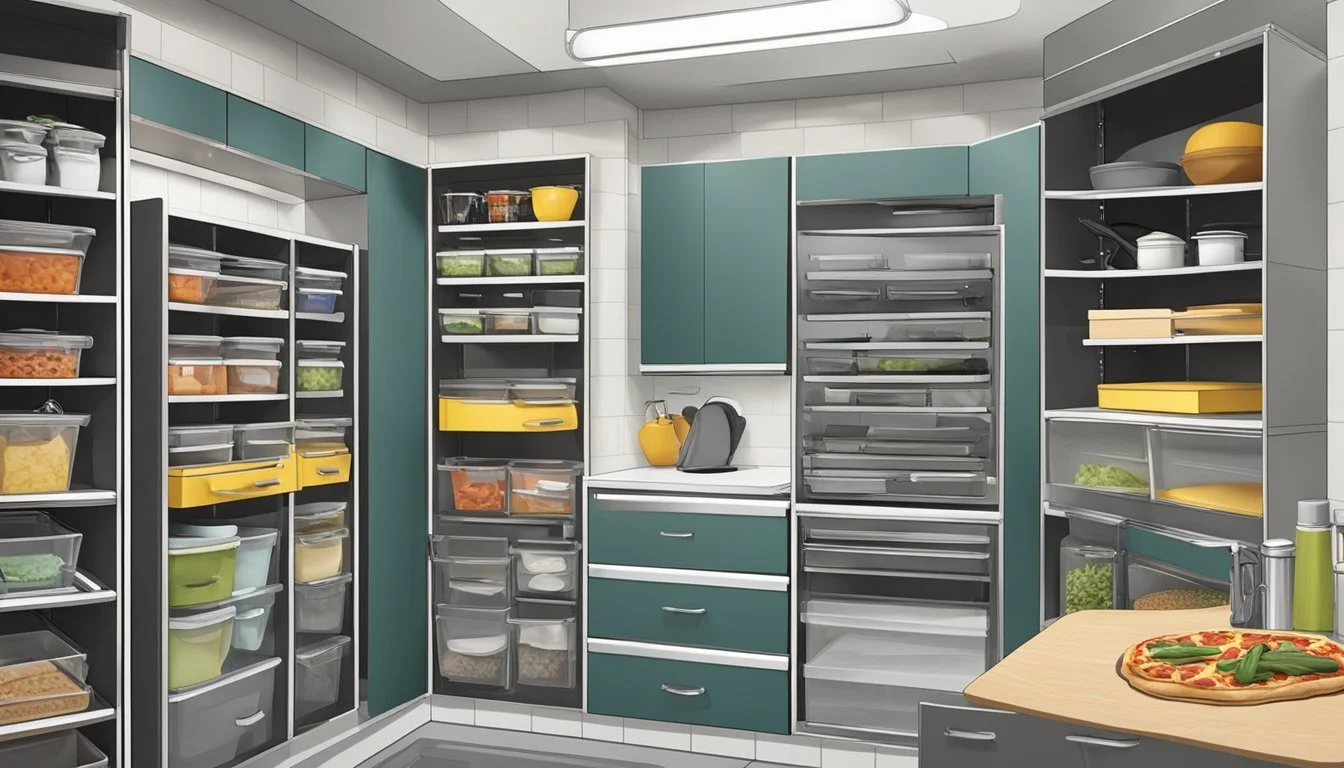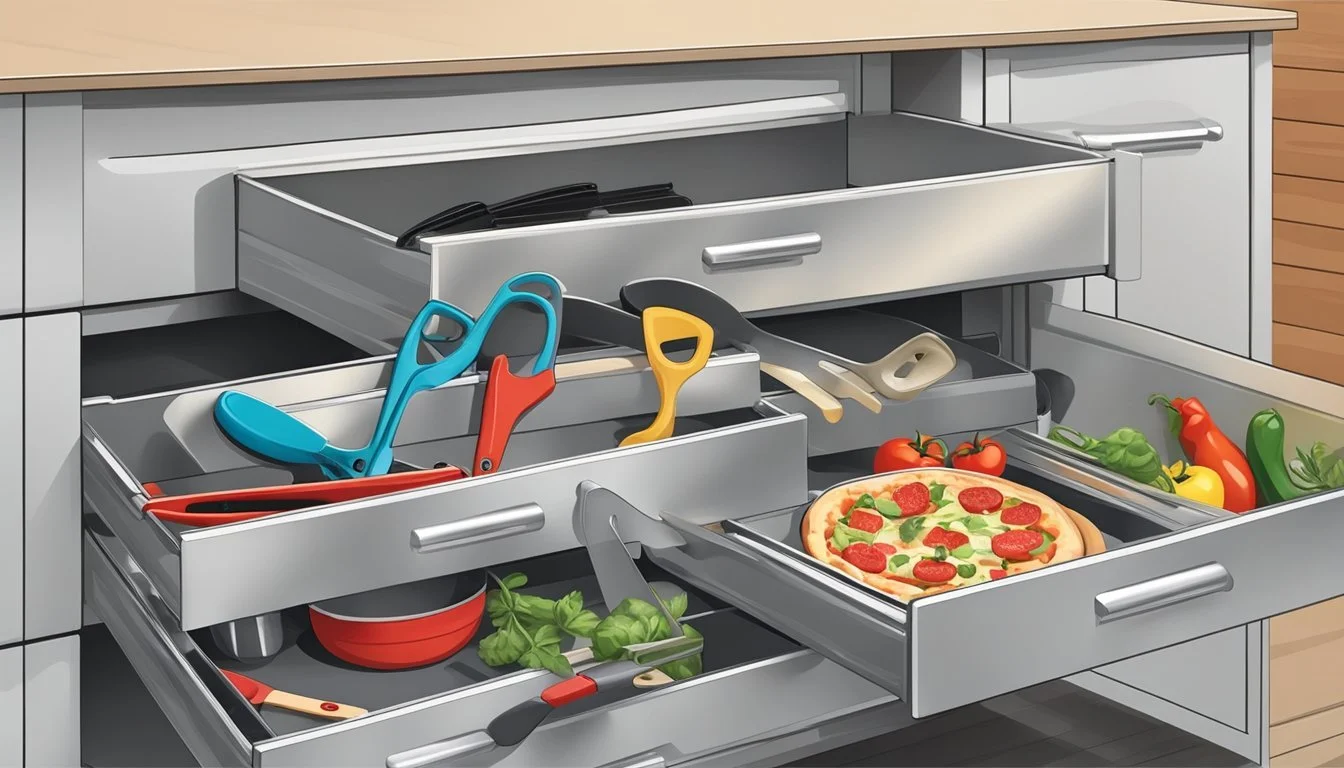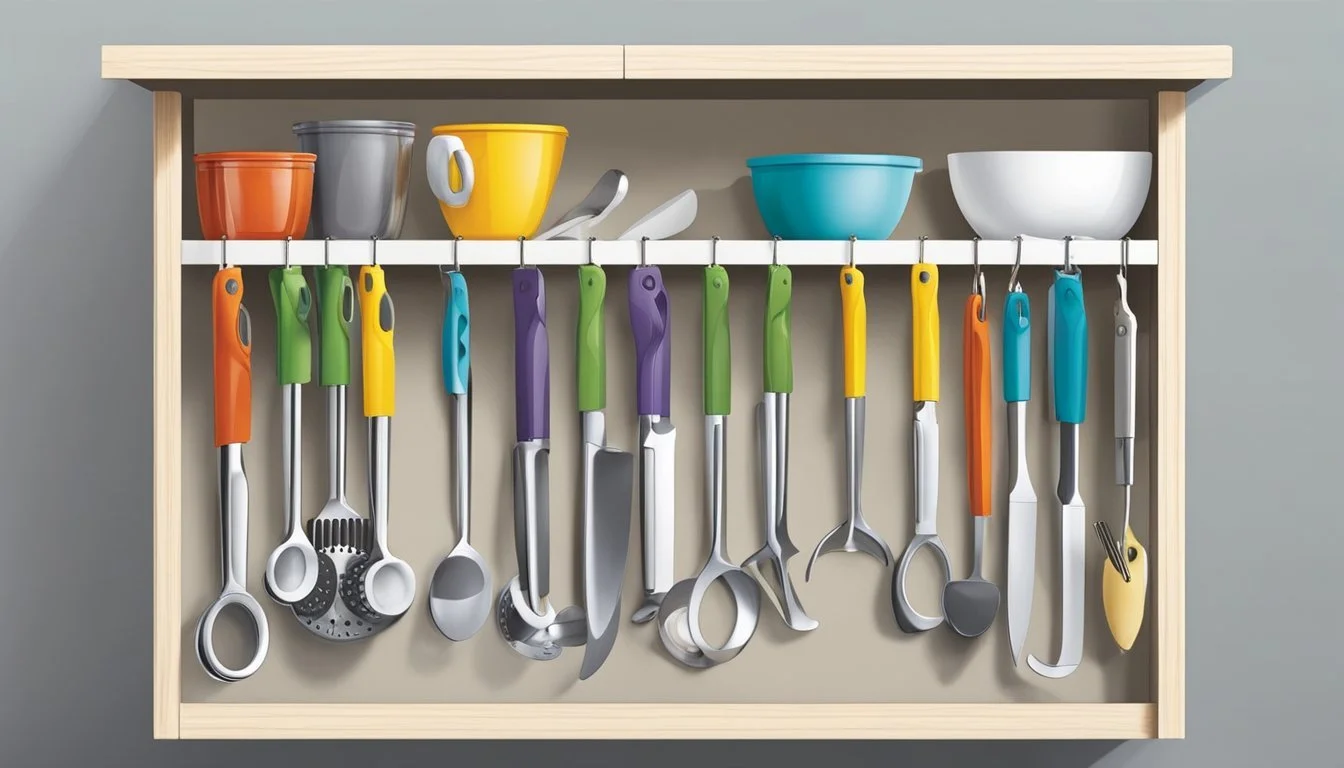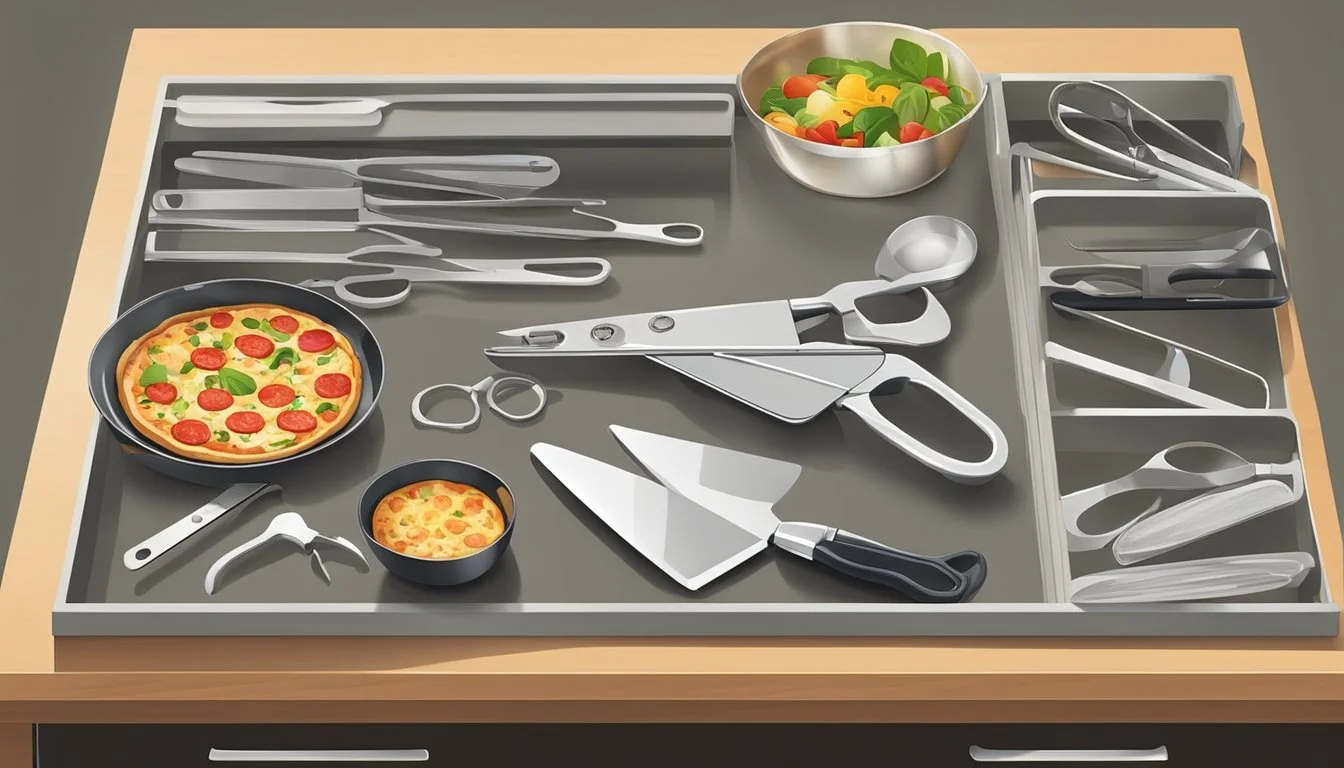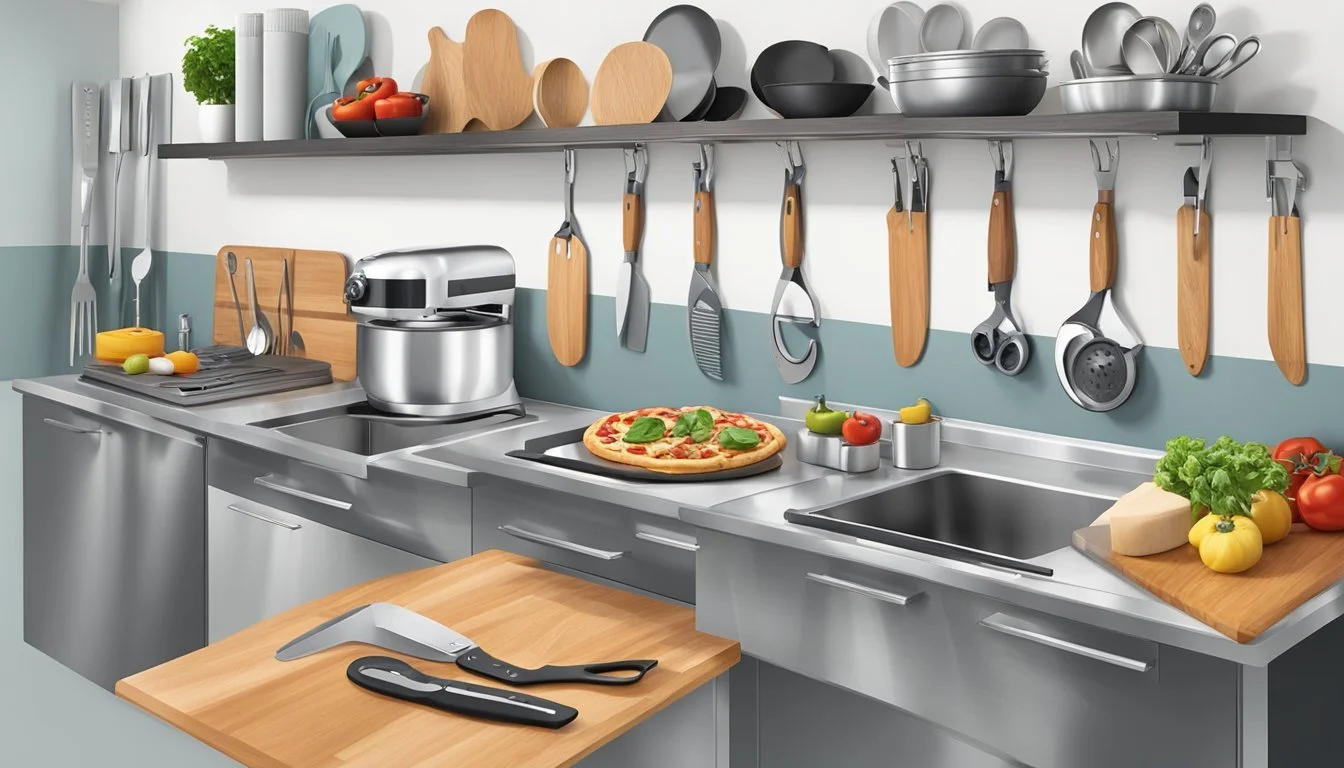10 Clever Ways to Store Your Kitchen Shears and Pizza Cutters
Organizational Hacks for Clutter-Free Drawers
Kitchen shears and pizza (What wine goes well with pizza?) cutters are indispensable tools for any culinary enthusiast, adept at effortlessly slicing through a range of ingredients and crusts. However, their unconventional shapes can present unique storage challenges in the kitchen. Proper storage not only prolongs the life of these tools but also contributes to a safer and more organized cooking space.
Creative storage solutions can cater to various kitchen layouts and personal preferences. Whether one opts for a drawer organizer with bespoke compartments or a magnetic strip that showcases the tools while keeping them close at hand, the objective is to balance accessibility with clutter reduction.
A well-considered approach to storing kitchen shears and pizza cutters encompasses aspects such as ease of cleaning, maintaining sharpness, and optimizing kitchen space. By integrating these tools into the kitchen's design, one can ensure they remain functional and ready for use whenever the need arises.
The Importance of Proper Storage
Proper storage of kitchen shears and pizza cutters is critical to maintaining their functionality and safety. The way these tools are stored affects their performance, lifespan, and the efficiency of the kitchen work space.
Maintaining Safety
Kitchen shears and pizza cutters are equipped with sharp blades that can pose a safety hazard when not stored correctly. Storing them with blades securely covered prevents accidents such as cuts from carelessly reaching into a drawer. A magnetic strip or a specifically designed shears holder ensures the blades are not exposed, and the handles are readily accessible without the risk of injury. Additionally, ensuring that storage solutions are not slippery or prone to movement protects against unexpected mishaps.
Enhancing Longevity
The materials often used in these tools, such as stainless steel, are susceptible to damage if not cared for properly. Storing shears and pizza cutters in a dry, clean area preserves the blades from rust and corrosion. Tools should be thoroughly dried after washing to avoid moisture-related damage. Using knife blocks or edge guards can also protect the sharp edges from becoming dull, thus maintaining performance for a longer period.
Optimizing Kitchen Efficiency
Having easy access to kitchen shears and pizza cutters can streamline cooking and food preparation tasks. Storage solutions such as drawer dividers or hanging racks keep these tools in a designated spot, reducing the time spent searching for them. A well-organized storage system also makes it easier to identify which tool is most useful for a given task, thereby optimizing workflow in the kitchen.
Aesthetic and Space Saving Solutions
The sheer variety of sizes and styles of shears and pizza cutters can challenge any kitchen's organization. Implementing space-saving storage solutions that complement the kitchen's style can contribute both functionally and aesthetically. For instance, a sleek wall-mounted rack or a drawer insert can conserve countertop space while keeping tools within reach. Integrating storage into the kitchen design also adds a touch of style that is both practical and visually appealing.
Types of Kitchen Shears
Kitchen shears are versatile tools in the culinary arsenal, designed to tackle a wide range of tasks from snipping fresh herbs to cutting through chicken bones. They vary in blade strength, handle design, and additional features to cater to specific needs.
Standard Shears
Standard kitchen shears are the all-purpose scissors found in most households. They generally have stainless steel blades that are sharp enough for daily tasks like chopping herbs or cutting open food packaging. Standard shears should fit comfortably in most users' hands and often include right and left-handed variants to accommodate all users.
Heavy-Duty Shears
Designed for more robust applications, heavy-duty kitchen shears have thicker blades and more substantial handles to exert greater force. They excel in slicing through tougher materials such as cartilage, chicken bones, and even seafood shells. Some heavy-duty shears are equipped with serrated edges to enhance performance and reduce slippage during cutting.
Specialized Shears
Specialized kitchen shears cater to niche tasks, often incorporating additional features beyond cutting. Models may feature a built-in bottle opener or a notch for dealing with challenging twists and caps. These tools are crafted for precision tasks such as deveining shrimp or carefully trimming away fat. Users can find shears with blades designed for snipping delicate fresh herbs or variants created specifically for left-handed chefs.
Assessing Your Needs
Before one can optimize the storage of kitchen shears and pizza cutters, it’s important to evaluate how often these tools are used, the types of food they are used for, the available storage space, and personal preferences relating to organization and access.
Frequency of Use
For those who frequently snip herbs such as chives, basil, or use shears for cutting chicken bones or spatchcocking poultry, having kitchen shears readily accessible is crucial. The same applies to pizza cutters; regular usage for slicing quesadillas or pizza means they should be stored in a readily accessible location, possibly near the cutting board for efficiency.
Types of Food Preparation
Consider the variety of tasks: If you regularly garnish dishes with herbs, trim green beans, or cut florets of cauliflower, a good pair of sharp kitchen shears is indispensable. Conversely, if you mostly use a pizza cutter for its namesake or similar items, this should influence how and where you store it.
Storage Space Considerations
The size of the kitchen largely dictates storage possibilities. Individuals with limited kitchen space might choose a compact holder or magnetic strip. For larger kitchens, drawer dividers or countertop blocks may be adequate to separate shears and pizza cutters from other utensils.
Personal Preferences
Personal preferences include choosing a storage method that caters to left-handed or right-handed users for ease of grip and control. The style and size of the shears and pizza cutter may require specific holders to accommodate their unique design. Preferences for keeping tools away from areas where they might gather dust or be affected by kitchen splatter should also be taken into account.
Selecting the Right Pizza Cutter
When choosing a pizza cutter, one must consider the type, material, ergonomics, and maintenance to ensure optimal performance and longevity.
Types and Shapes
There are primarily two types of pizza cutters: the wheel and rocker. The wheel style features a sharp rotating disc and is suited for most pizzas, especially those with a standard crust thickness. The rocker, on the other hand, is a large blade that rocks back and forth, offering quick cuts and is efficient for large pizzas and thicker crusts.
Material and Handle Design
The best pizza cutters typically have stainless steel blades for durability and ease of cleaning. Handles vary from plastic to wood and metal with ergonomic designs. A non-slip grip and a thumb guard are important for safety and control during the cutting process.
Performance and Maintenance
Sharp blades are crucial for clean cutting without dragging cheese and toppings. After use, pizza cutters should be washed according to the manufacturer's instructions. Some may be dishwasher-safe, while others require hand washing to maintain edge integrity.
Buying Guides
When consulting buying guides, one should look for recommended brands such as Oxo Good Grips for wheel cutters or Love This Kitchen for rocker-style options. The guides will often provide price comparisons and reviews that reflect the cutter's performance. Brands like Wüsthof are known for their sharp knives and may offer pizza cutters that align with their high-quality standards.
Innovative Storage Ideas
Shears and pizza cutters are indispensable kitchen tools, and storing them properly ensures they remain accessible and in good condition. The following storage solutions are designed to cater to the unique shapes and sizes of these tools, promoting a blend of functionality and style.
Magnetic Holders
Magnetic holders are a sleek and efficient way to store metallic kitchen tools like shears and pizza cutters. They can be fixed to a wall or under cabinet spaces, allowing blades to hang securely by their metal parts. This keeps the sharp edges safely out of reach while ensuring easy access when needed.
Pros: Keeps counters clear; Easy to clean around.
Cons: Not suitable for non-magnetic materials.
Drawer Organizers
A drawer organizer with customized slots can be an ideal storage solution for shears and pizza cutters. It prevents tools from moving around and getting damaged when the drawer is opened or closed. If one opts for adjustable organizers, they can tailor the compartments to fit handles and blades of any size.
Pros: Protects blades; Conceals tools.
Cons: Takes up drawer space; Limited visibility.
Wall Racks and Hooks
Wall racks and hooks offer a traditional and versatile storage method. They can be mounted on a backsplash or side wall, turning the storage of shears and a pizza cutter into a display that can complement the kitchen’s design. By choosing a rack with hooks, one can hang the tools by their handles, balancing security and style.
Pros: Space-efficient; Customizable placement.
Cons: Requires wall installation; May not fit all kitchen styles.
Custom Solutions
For those seeking a personalized touch, custom storage solutions can be built into kitchen design. A bespoke drawer or a hidden nook within a kitchen island offers a tailored place for each tool. Custom constructions ensure that each pair of shears or pizza cutter fits perfectly, aligning with the kitchen’s overall aesthetics.
Pros: Tailored to specific tool sizes; Seamless integration into kitchen design.
Cons: Can be costlier; Fixed storage option.
The choice of storage solution should reflect one's kitchen style, usage patterns, and the specific design and construction of their shears and pizza cutter.
Care and Maintenance Tips
Ensuring your kitchen shears and pizza cutters maintain their performance and safety involves regular care and attention to their cleaning, sharpening, and overall condition.
Cleaning and Sanitization
Kitchen Shears and Pizza Cutters: After each use, wash the blades and handles with warm, soapy water, and rinse thoroughly. Stainless steel is often dishwasher-safe, but to preserve the integrity of the blades, hand washing is typically recommended. Always dry completely to prevent rust.
Shears: Disassemble if possible for a deeper clean.
Pizza Cutters: Focus on removing any pizza residue from the cutting wheel.
Sharpening and Blade Care
To keep the cutting edges sharp and ensure optimal performance:
Use a sharpening stone or a honing rod designed for kitchen shears and knives.
Perform 10-20 strokes on each side of the blade or follow the manufacturer's guidelines.
Pizza cutter wheels can be sharpened using a circular sharpener or by running the edge along a honing rod while rotating the wheel.
Regular Inspections
Regularly inspect your shears and pizza cutters for signs of wear and tear. Check for:
Loose screws or bolts in the handles.
Bending or dulling of the blades.
Damage to the cutting wheel of pizza cutters.
Replace any components if necessary or consider professional sharpening for heavy-duty equipment.
Replacement and Upgrades
Refer to buying guides when considering replacements or upgrades to ensure the selection of high-quality tools. Look for features like:
High-grade stainless steel for durability and longevity.
Ergonomically designed handles for comfort and safety.
For shears, consider those that come apart for easy cleaning.
Replace your tools if they can no longer be effectively cleaned, sharpened, or used safely.
Expert Advice and Resources
This section provides insight into recommended practices for storing kitchen shears and pizza cutters, sourcing from professional expertise, accessible online material, and the collective experiences of culinary communities.
Professional Recommendations
Professionals often emphasize the importance of a good pair of kitchen shears for tasks like spatchcocking poultry or chiffonading herbs such as scallions. They suggest shears that come apart for thorough cleaning to maintain optimal performance and hygiene. As for pizza cutters, experts recommend sturdy handles and sharp wheels that can slice through crust without dragging the toppings. Brands like Wüsthof are frequently cited in buying guides for offering superior durability.
Kitchen Shears: Look for detachable blades, dishwasher-safe materials, ergonomic grip.
Pizza Cutter: Prioritize sharp wheels, easy-to-clean design, stability during use.
Online Tutorials
A plethora of online tutorials guide users through proper care and storage methods for kitchen shears and pizza cutters, ensuring longevity and safety. They share techniques for effectively using these tools, from achieving fine cuts of scallions for a recipe to creating clean slices of pizza. YouTube channels and cooking websites often provide step-by-step visuals to aid comprehension.
Care Instructions: Online platforms like YouTube.
Usage Techniques: Step-by-step guides for cuts such as chiffonade or spatchcock.
Community Insights
Culinary forums and discussion boards are rich with community insights related to kitchen tools. Here, users exchange personal experiences with various brands and models. Commonly, members discuss the multifunctionality of kitchen shears, beyond just cutting, noting how they can also assist in cracking nuts or opening bottles. The pizza cutter is often highlighted for its utility beyond pizza, such as cutting dough or quesadillas.
Multifunctionality: Both shears and pizza cutters are versatile; sharing uses beyond their primary function.
Personal Experiences: User recommendations and warnings regarding specific models or brands.
Conclusion
When organizing a kitchen, the proper storage of utensils such as kitchen shears and pizza cutters is essential for maintaining a functional space. Shears and pizza cutters demand accessibility without sacrificing safety or causing clutter. Several storage solutions presented, when implemented, can result in a well-arranged kitchen environment.
Drawer Inserts: Utilize drawer inserts to separate shears and pizza cutters, keeping them from damage and ensuring easy retrieval.
Magnetic Strips: Install magnetic strips to hang metal utensils, which both saves space and provides visual awareness of your tools.
Utensil Holders: Place shears and pizza cutters in utensil holders, group similar items for a structured look.
Hanging Racks: Consider racks for hanging larger items, positioning your shears and pizza cutters within arm’s reach.
Custom Solutions: Embrace custom storage options that accommodate the unique shapes of these utensils, safeguarding the blades and handles from wear.
Effective storage solutions extend the longevity of these tools and simplify the cooking process. Each kitchen has its unique demands, and the storage ideas should be tailored accordingly. Users are encouraged to evaluate these suggestions, factoring in their personal kitchen sizes and utensil assortments. By implementing these practices, individuals can enjoy an orderly kitchen where every tool has a place and the routine of cooking becomes more efficient and pleasurable.


